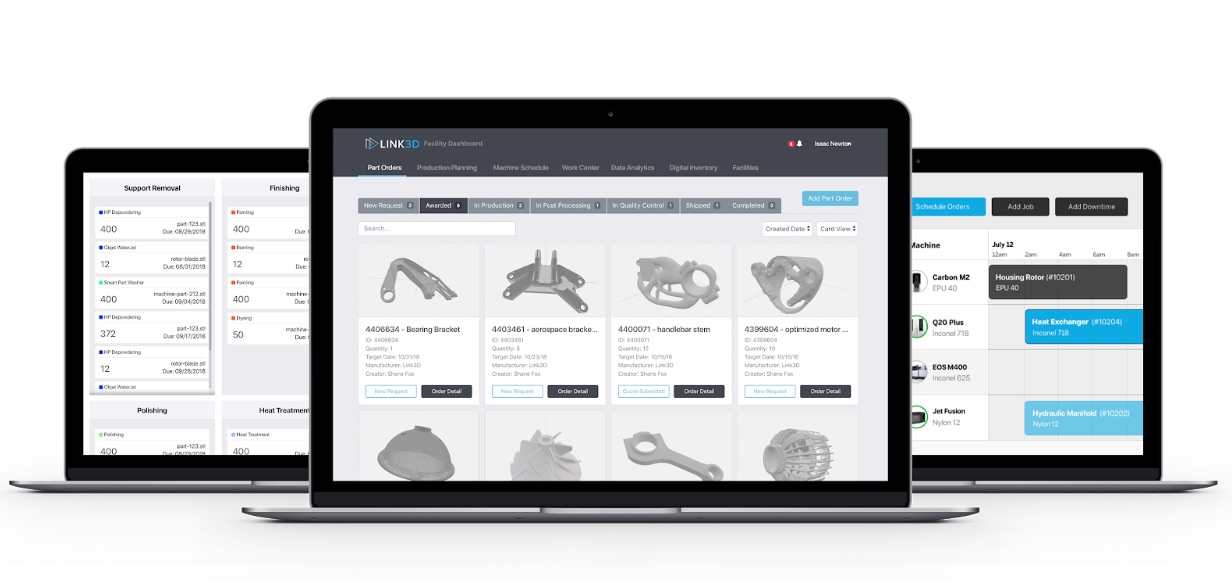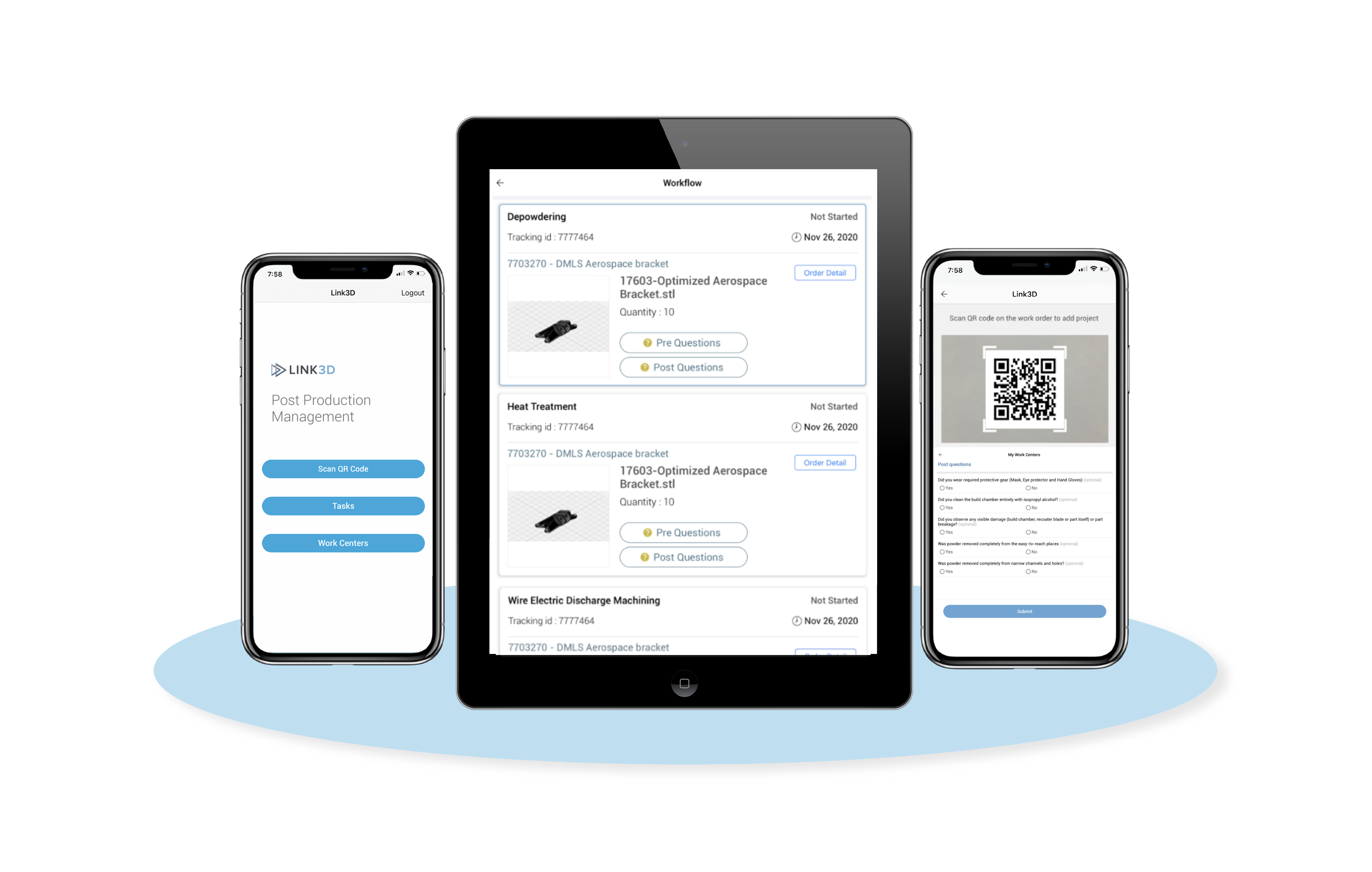After relocating headquarters to Colorado Link3D has launched its first mobile Post-Production Management App.
The app from the additive manufacturing software company will enable companies to streamline their post-production processes into a “truly digital thread” to allow efficient end-to-end management of 3D printed parts.
“We have seen the Post Production app streamline the post-processing steps and increase the traceability without adding overhead to every task,” said Lara Janse van Vuuren, technical program manager at Link3D.
“The paper trail is eliminated without losing the sign-offs and accountability for each step after the printing process.”
Link3D’s digital software for 3D printing
Link3D provides a suite of digital software systems to help optimize workflows and production processes across additive manufacturing.
In 2018, the firm launched a new production planning and manufacturing scheduling system for its additive manufacturing workflow software, designed to help users maximize machine utilization, track and trace yield, and capacity management. Later that year at Formnext, Link3D launched its Post Processing Management Technology to optimize downstream manufacturing processes within a 3D printing supply chain.
Since then, the company has developed a new Additive Material Recommendation System (AMRS), added a True Shape Nesting feature to its suite, and unveiled a Material Tracking System module to increase additive manufacturing traceability.
More recently, Link3D closed a $7 million funding round which aimed at growing the company’s sales and operations in North America, Europe, and Japan.

The Post Production App
Able to compose order forms and interpret data in any language, Link3D’s mobile app allows users to keep track of queued, completed, and failed parts through an automated Production Dashboard. Orders can then be automatically routed through a series of pre-defined work centers. Users will be able to monitor the status of each part within the production process, as well as how many parts were successfully printed at each work site.
Reasons for failure at each work center can also be tracked through the app to increase yield management traceability via a document upload feature. To aid efficiency, the app allows users to monitor the labor and machine hours taken to complete each post-process for various parts, offering checklist functions for technicians to work from.
The app can provide additional order details and information on specific parts for context, including any particular production requirements for that part and relevant customer information. In all, the app aims to bring all facets of the production process together to increase the efficiency of each job, while providing total transparency across each step of the operation.

End-to-end software solutions for AM
3D printing enterprises are seeking to optimize their supply chains through end-to-end digitization. Automating and connecting elements of the production process enables businesses to increase efficiency and control over their operations, essentially helping to optimize their workflow systems.
For example, metal additive manufacturer Sintavia and industrial manufacturing company Siemens announced a collaboration to develop an end-to-end 3D printing software as part of Siemen’s Xcelerator portfolio. Prior to this, Siemens signed an OEM partnership with San Francisco-based software firm Identify3D to enable the integration of Identify3D’s security suite within Siemens’ software solutions. The aim was to support customers in creating automated, end-to-end manufacturing data distribution across multiple control systems and production equipment.
Meanwhile, Brazilian petrochemical company Braskem adopted 3D software start-up Spare Parts 3D’s (SP3D’s) DigiPart program to help optimize its inventory supply chain and reduce its expenditure on holding large amounts of stock.
Elsewhere, Oak Ridge National Laboratory (ORNL) researchers developed an Artificial Intelligence (AI) software, nicknamed Peregrine, to monitor the metal 3D printing process in real-time. The program forms part of ORNL’s broader “digital thread,” which closely tracks and analyzes data through each step of the manufacturing process.

Subscribe to the 3D Printing Industry newsletter for the latest news in additive manufacturing. You can also stay connected by following us on Twitter and liking us on Facebook.
Be sure to subscribe to the Another Dimension podcast on your chosen podcast player to make sure you never miss an episode.
Looking for a career in additive manufacturing? Visit 3D Printing Jobs for a selection of roles in the industry.
Featured image shows Link3D’s Post Production app allows efficient end-to-end management of 3D printed parts. Image via Link3D.


